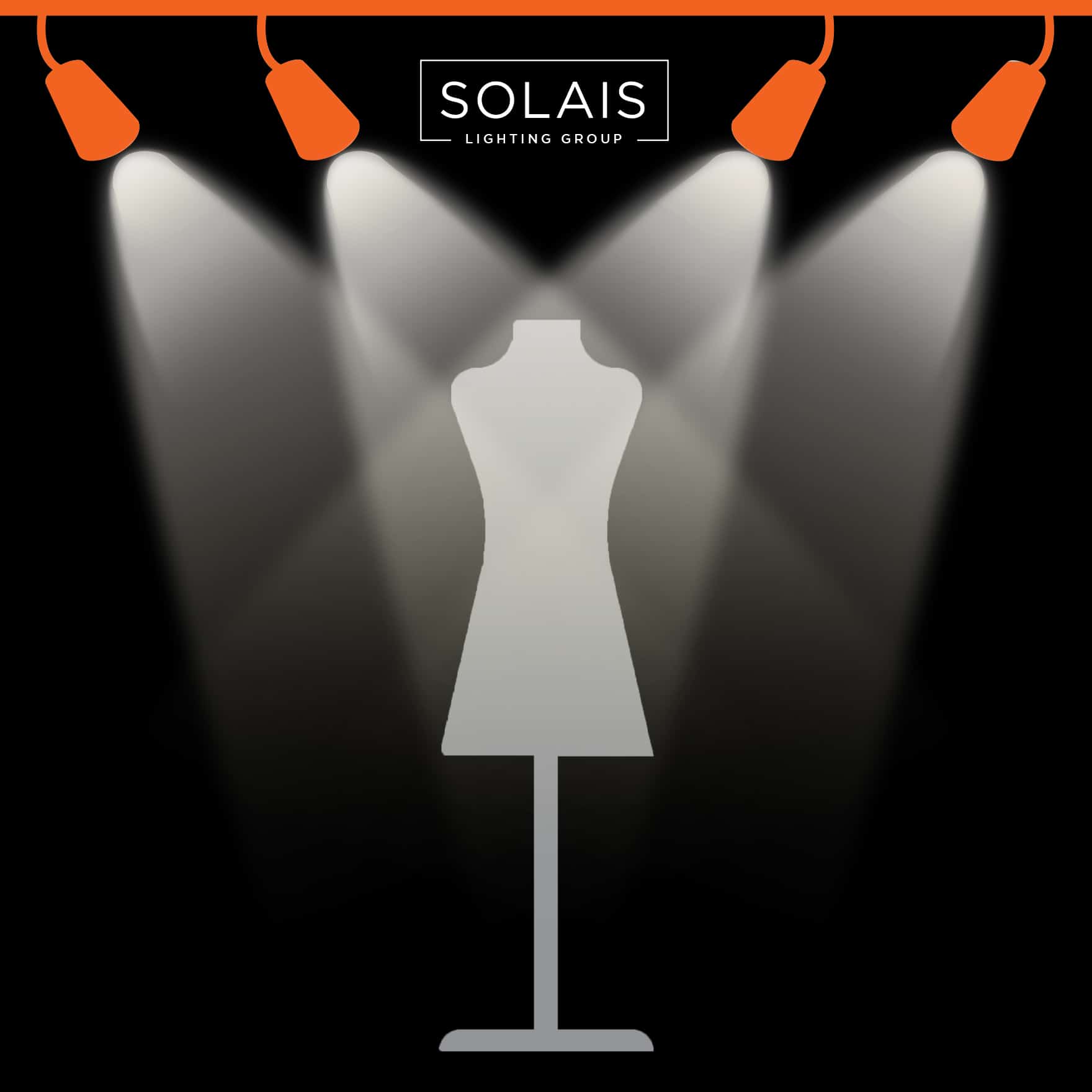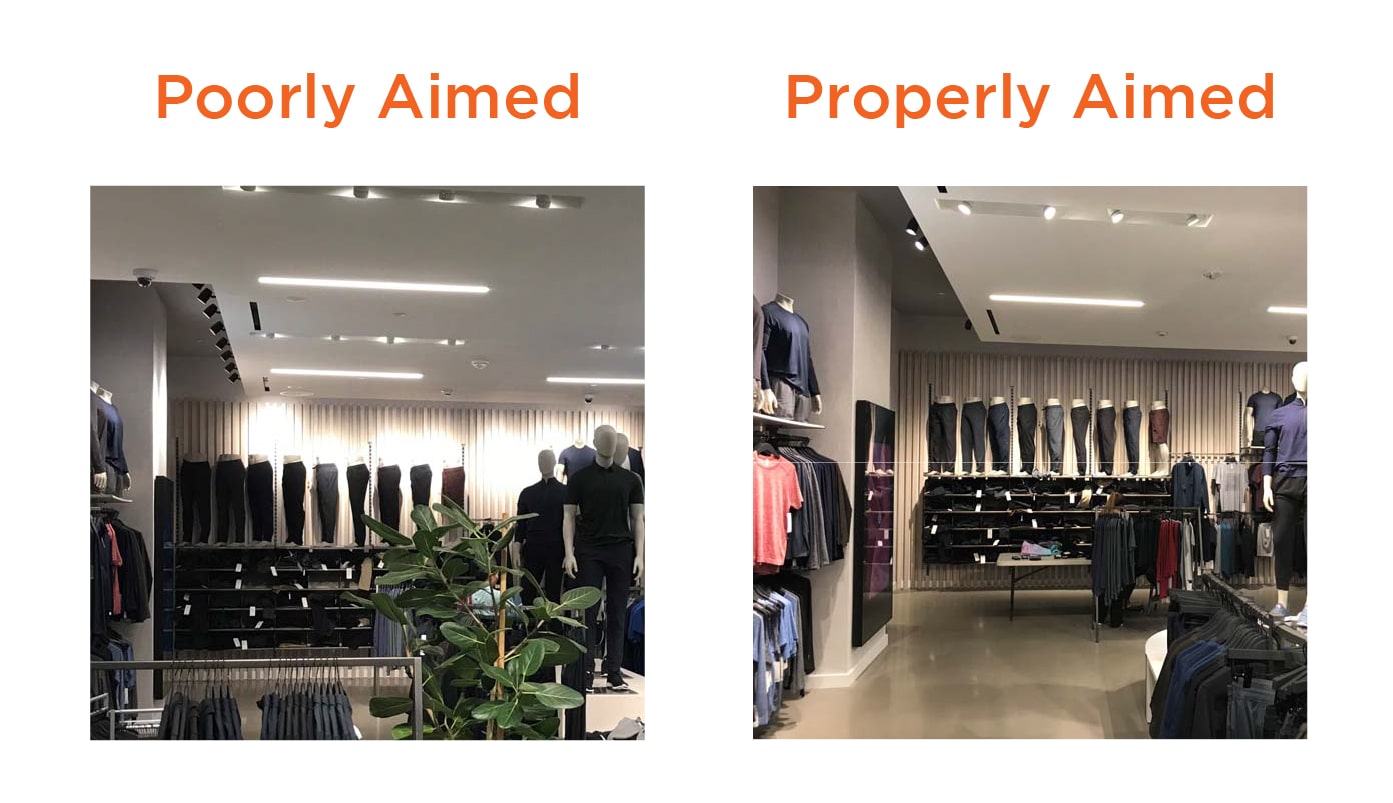Proper light placement is essential, especially when it comes to retail. We can take all day designing a floor plan, merchandising product, choosing the best displays — but if the light isn’t aimed accurately, all that work is for nothing. The human eye is naturally drawn to illuminated items. Retailers often focus on lighting the back of stores to draw people in. This leaves employees as the only selling tool. Although it is an effective tactic to draw people in, well-aimed lighting offers a way to improve. Similar to installing a sale sign to attract attention, pointing light correctly makes product look more appealing to the eye.
For most applications, retail lighting consists of general and accent lights. The goal is to emphasize product, not display cases or the floor. The ideal angle for retail is 30° to 45° from nadir (nadir meaning pointing directly at the floor). Anything above 45° creates a glare that can be distracting or uncomfortable to a client. Consider using wider beam spreads, greater than 35°, to achieve a wall-wash effect. A beam spread of 4° to 25° is used for spotlighting and highlighting specific items.

Cross lighting is another tactic to use when highlighting merchandise. This is created when two light beams cross over one another to produce shadows and contrast. When cross lighting, angle the lighting fixture so the beams come together at the point intended to highlight. This builds depth and avoids a flat, one-dimensional look when emphasizing a product.
Below is another example of how aiming effects and environment. As shown in the poorly aimed photo, the lights are all pointed in the same direction, with no attention to detail. It is essential to avoid hot spots (the direct circle of light on the wall); this causes uneven light distribution. In the areas where products are strenuous to look at, those will be the least likely to sell. Where the store is properly aimed, you get a balanced effect. The difference is in the way the trackheads are pointing in multiple directions, lighting up every spot in the store. This effect is most pleasing to customers while browsing.

